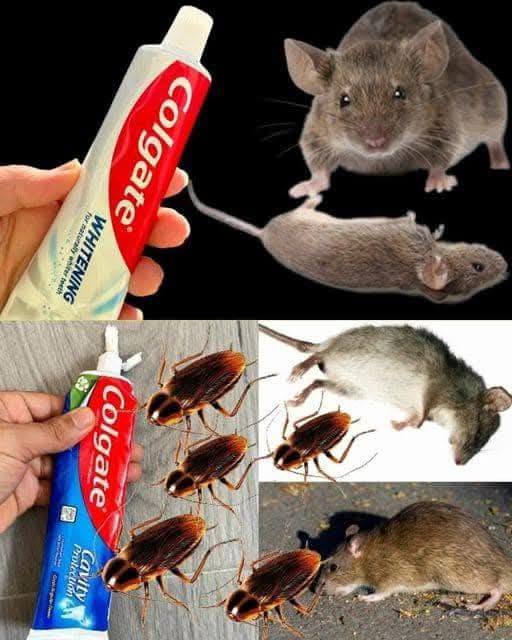
Sometimes the most effective household solutions are hiding in plain sight — right there on your bathroom sink! Today, I just want to say a quick thank you to one of the most underestimated heroes of our homes: toothpaste. Yes, the same tube that brightens your smile can also help you reclaim your kitchen and pantry from pesky invaders.
If you’ve been struggling with cockroaches sneaking into cupboards or ants marching across your counters, this might just become your favorite natural hack. I’m talking about a safe, simple, and surprisingly effective remedy that requires no harsh chemicals — just a touch of minty ingenuity.
💌 Want more clever home hacks like this? Subscribe to get smart, safe cleaning and pest-control tips sent straight to your inbox!
Why Toothpaste Works Against Pests
When you think of toothpaste, pest control isn’t the first thing that comes to mind — but here’s the science behind the surprise:
- Disrupts scent trails: Ants follow chemical trails to food sources. Toothpaste masks and erases these trails, confusing them completely.
- Irritates exoskeletons: Ingredients like baking soda, fluoride, and mint oils can irritate pests’ sensitive bodies and drive them away.
- Non-toxic and family-friendly: Unlike chemical sprays, toothpaste is harmless to humans and pets when used properly.
It’s cheap, easy to apply, and you probably already have it on hand.
Reasons to Love This Method
- 🪴 Natural & Non-toxic: Safe for kids, pets, and food areas.
- 💰 Budget-friendly: No need to buy pricey sprays or traps.
- 🧼 Multi-purpose: Works for both cockroaches and ants.
- 🌿 Smells fresh: Leaves your kitchen minty clean instead of chemical-laden.
- 🕵️ Easy DIY: No experience needed — just follow the simple steps below.
What Toothpaste Works Best
Stick with white, mint-flavored paste, not gel. Gels often contain more artificial dyes and fewer of the active ingredients that repel bugs. Brands with baking soda or fluoride tend to be most effective.
Materials You’ll Need
To get started, gather these simple items:
- Regular mint-flavored toothpaste
- Cotton swabs or a small cleaning brush
- Cloth or sponge (optional, for wiping excess)
- Small bowl
- Water
Optional for a stronger effect:
- 1 tsp baking soda (to enhance irritation to pests)
- ½ tsp lemon juice or vinegar (boosts acidity to deter insects further)
Step-by-Step: How to Use Toothpaste Against Cockroaches and Ants
Step 1: Identify Entry Points
Start by inspecting your home carefully. Look for where pests enter or gather — under sinks, around baseboards, behind the stove, or near food storage areas.
🕵️♀️ Pro tip: Ants often leave visible trails; follow them back to their source.
Step 2: Prepare the Mixture
Squeeze a few tablespoons of toothpaste into a bowl. Add baking soda and a few drops of lemon juice if desired, then stir until smooth.
Avoid using gel toothpaste — the paste variety sticks better and lasts longer.
Step 3: Apply the Toothpaste
Using a cotton swab or small brush, apply a thin line or small dabs of the toothpaste mixture to areas where pests commonly appear.
Focus on:
- Corners of cupboards
- Window and door frames
- Around drains and baseboards
- Behind trash bins and appliances
Let it sit undisturbed. The strong mint aroma and texture will deter pests from approaching these areas.
Step 4: Reapply as Needed
The toothpaste will gradually dry out over a few days. Reapply once a week or after cleaning the area for continued protection.
Step 5: Wipe Away Old Paste
After a week or so, wipe off any dried toothpaste and reapply fresh paste if necessary. This helps maintain effectiveness and cleanliness.
What to Expect
- Ants: You’ll notice them disappear within 1–2 days. Their scent trails are broken, and they lose direction.
- Cockroaches: They may avoid the area altogether or die if they come into contact with the mixture (especially if baking soda is included).
Additional Tips for Success
- Keep your kitchen clean and dry — toothpaste works best when pests can’t find alternate food sources.
- Seal small cracks and holes after treatment to prevent re-entry.
- For stubborn infestations, use toothpaste alongside other natural deterrents like vinegar spray or bay leaves.
Storage and Clean-Up
- Store leftover mixture in a small, sealed jar for up to a week.
- Always label it clearly and keep it away from children.
- Clean treated surfaces weekly with a damp cloth before reapplying.
Frequently Asked Questions
1. Does toothpaste kill cockroaches?
Not always immediately, but it deters and irritates them. When mixed with baking soda, it can be lethal if ingested.
2. Can I use gel toothpaste?
No — it’s too slippery and less potent. Stick to paste formulas.
3. Is toothpaste safe to use near food areas?
Yes, but avoid direct contact with food surfaces. Apply around rather than on countertops.
4. How long does it last?
A single application can stay effective for 5–7 days before needing a refresh.
5. Can I use this outdoors?
Yes! Apply near door thresholds, garbage bins, or patio entrances.
Conclusion
Who knew the secret to a pest-free kitchen might be sitting right next to your toothbrush? This simple toothpaste trick is proof that nature — and a little creativity — can often outsmart even the most stubborn invaders.
It’s inexpensive, safe, and works like a charm for small infestations. Plus, your home will smell fresh and clean, not chemical-laden.
So next time ants march in or roaches sneak by, grab that tube of toothpaste — your unexpected pest-fighting partner!
Related Posts You’ll Love
- 🌿 The Natural Power of Cloves: Home Remedies for Better Health
- 🧄 Irresistible Garlic Ranch Roasted Potatoes
- 🧼 Baking Soda & Vinegar: The Ultimate Cleaning Duo
💬 Share Your Results!
Have you tried this hack? I’d love to hear how it worked for you! Drop a comment below or share your before-and-after photos on Pinterest with #AllRecipesFun — your tip might inspire someone else!
Safety Note
This method is safe for light household use but not a substitute for professional pest control in severe infestations. Always keep toothpaste and mixtures out of children’s reach.

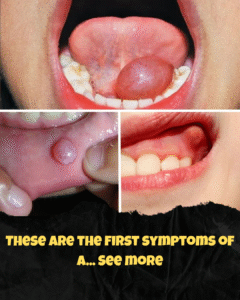
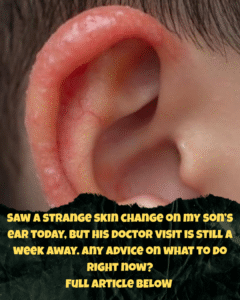
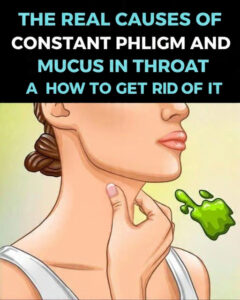
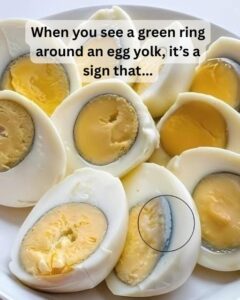
Leave a Reply